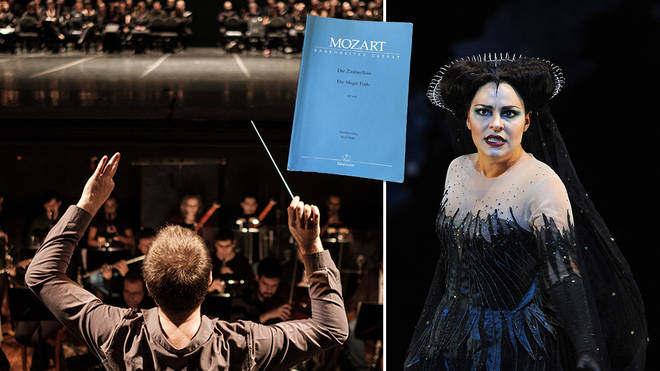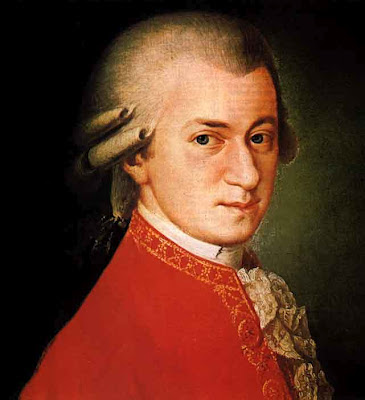
From the Marriage of Figaro to Carmen, here are ten of the most memorable musical beginnings to operas.
The lights in the theatre dim and a hush falls over the buzzing excitement of the audience, as the orchestra strikes up the first note.
A good opera overture sets the scene for the drama that’s about to unfurl, bringing the audience into the narrative world and suspending their reality for the next few hours.
A great opera overture does not only that, but stands tall as a piece of music in its own right, performed in concert repertoire by orchestras around the world.
Whether you’re just starting to dip your toe into the wonderful world of opera or have a lifetime membership at Glyndebourne, here are 10 of the absolute best opera overtures of all time.
Verdi – The Force of Destiny
With a main theme made famous by the “Reassuringly expensive” Stella Artois TV campaign of the 1990s, this operatic opener is indeed “Reassuringly ” with the Italian composer’s customary mix of exquisite melody and thundering full-orchestra outbursts.
The opera’s iconic theme is a sinister melody known as the fate motif. It’s a powerful, almost cinematic tune. It’s heard first in this overture and then throughout the coming opera, which explores a journey of tragedy, love and loss – with some accidental murders and curses thrown in, because it’s, you know, a Verdi opera.
Mozart – The Magic Flute
At the age of 28, Mozart joined the Masonic order, a secretive organisation with a rich set of rituals and symbols that many scholars believe are evident in Mozart’s later works, The Magic Flute being one of them. The number three holds significance within Freemasonry, and the overture to this opera alone has several allusions.
Right from the start, three chords ring out, dominated by a chorus of three trombones. The overture is even in E flat major, which has three flats in its key signature. After its stately opening, a merry flurry of strings and countermelodies follow, becoming increasingly forceful with the addition of the rest of the orchestra. All in all, the perfect set up for an opera full of evil sorcerers, sprightly bird catchers, and enchanted instruments.
Rossini – William Tell
The overture that broke the mould, Rossini’s William Tell Overture escaped the clutches of the classical world and flew into the mainstream. It appeared as the theme tune for The Lone Ranger and in the soundtracks for A Clockwork Orange and The Princess Diaries, as well as influencing Rossini’s fellow classical composers, Strauss I and Shostakovich.
Comprising four parts, the flurrying finale is the section that is best known today, often used to depict galloping horses (despite the fact that not a single horse is featured in the opera itself).
Dame Ethel Smyth – The Wreckers
After five years touring Europe trying to persuade theatre impresarios to stage it, Smyth’s best-known opera The Wreckers finally received its premiere in Leipzig in 1906. Despite all her efforts, it wasn’t until the 21st century that The Wreckers was recognised for its brilliance and began to be performed more often, even taking the prime spot as the opening night for Glyndebourne in 2022, the UK’s oldest annual opera festival.
Set in a Cornish fishing village, the overture does exactly what the libretto says on the tin. Smyth’s masterful orchestration makes full use of all the sounds of the orchestra (complete with organ!) to take the audience on a cliffside walk along the Cornish coast, breathing in the fresh sea air and gazing at the picturesque greenery before an undercurrent drags you under into a tempestuous swirl of notes and stormy timbres.
Beethoven – Fidelio
Like so much Beethoven, the overture to his only opera didn’t have a straightforward compositional process. Beethoven agonised over the overture to it, composing three versions (titled Leonore Overtures, after the opera’s heroine). Then, with a name change, the breakthrough happened and we got the ‘Fidelio’ Overture.
Beethoven’s opera is a story of righteousness, pain, imprisonment and redemption. The overture, in full Beethoven drama, gives us the darkness and light that runs throughout the opera.
Bizet – Carmen
Under the scorching Spanish sun, a charming seductress uses her beguiling looks and voice to lure a naïve soldier from his post and his girlfriend. The fiery protagonist and namesake of the opera, Carmen’s motif is the last of three themes heard in Bizet’s overture.
The first is an almost circus-like march that announces the entry of the bullfighters to the arena, followed by the main refrain from the ‘Toreador Song’ which is one of the two most popular and easily recognisable themes from the opera, alongside the ‘Habañera’. The overture ends with the Carmen motif, a sultry cello melody over tremolo strings that perfectly encapsulate her electrifying and unnerving presence.
Mozart – Don Giovanni
Legend has it, Mozart left it right down to the wire to compose the overture to his opera . On the eve of the premiere, Wolfgang returned to his room after drinking with friends and got straight to work, slaving over his manuscript until the early hours. Thankfully for us, and for Mozart too, the piece that emerged from his alcohol-imbued pen nib that evening is nothing short of a masterpiece, the perfect fit for an opera that includes love, heartbreak, comic relief, a statue that comes to life, and a damnation to hell.
The overture is the perfect set-up to the ensuing drama, full of sinister strings, tolling timpani beats, and unnervingly rapid changes in dynamic, before a typically triumphant Mozartian fanfare.
Wagner – Tannhäuser
A tale of lust, love and loss, Wagner’s Tannhäuser is a mighty work, chock-full of lush Romantic harmonies, ingenious orchestration, and leitmotifs galore. Not that you’d expect any less from the composer who gave us the Ring cycle.
The overture opens with the ‘Pilgrim’s Chorus’, a slow and repentant theme played by wind and brass before being picked up by the strings, too. The strings take up a lilting countermelody to the trombones’ fanfare, lapsing into a yearning melody that represents the goddess Venus and her mystical domain.
Rossini – The Barber of Seville
Gioachino Rossini was known for his nifty nib, and managed to write all the music to the entire opera The Barber of Seville in just three weeks. Well, almost. Having left the overture to the last minute, Rossini decided instead to recycle one he’d used for two previous operas. Laziness or resourceful genius? We’ll let you decide.
Despite not bearing any relation whatsoever to the music in the rest of the opera, the Overture to The Barber of Seville is a brilliant piece of music in its own right. With a catchy main them over a softly chugging bass line, it’s a concert favourite to this day, made famous also by the 1950 Rabbit of Seville sketch by Looney Tunes, featuring Bugs Bunny.
Mozart – The Marriage of Figaro
Somewhat unsurprisingly, one of the greatest operas ever written also gave us one of the greatest overtures ever written. Mozart’s comic masterpiece tells the story of a rich Count with a wandering eye, who attempts to seduce the Countess’s maid, Susanna, ahead of her wedding day, only to be taught a hard-learned lesson in fidelity by Susanna, in league with the Countess.
While it doesn’t contain any of the themes of the opera that follows, the Overture to The Marriage of Figaro sets the scene perfectly for the playfully chaotic drama that unfurls throughout. A flurry of string and bassoon quavers are followed by a sighing woodwind motif that quickly leads into a full force fanfare, complete with timpani and brass.



